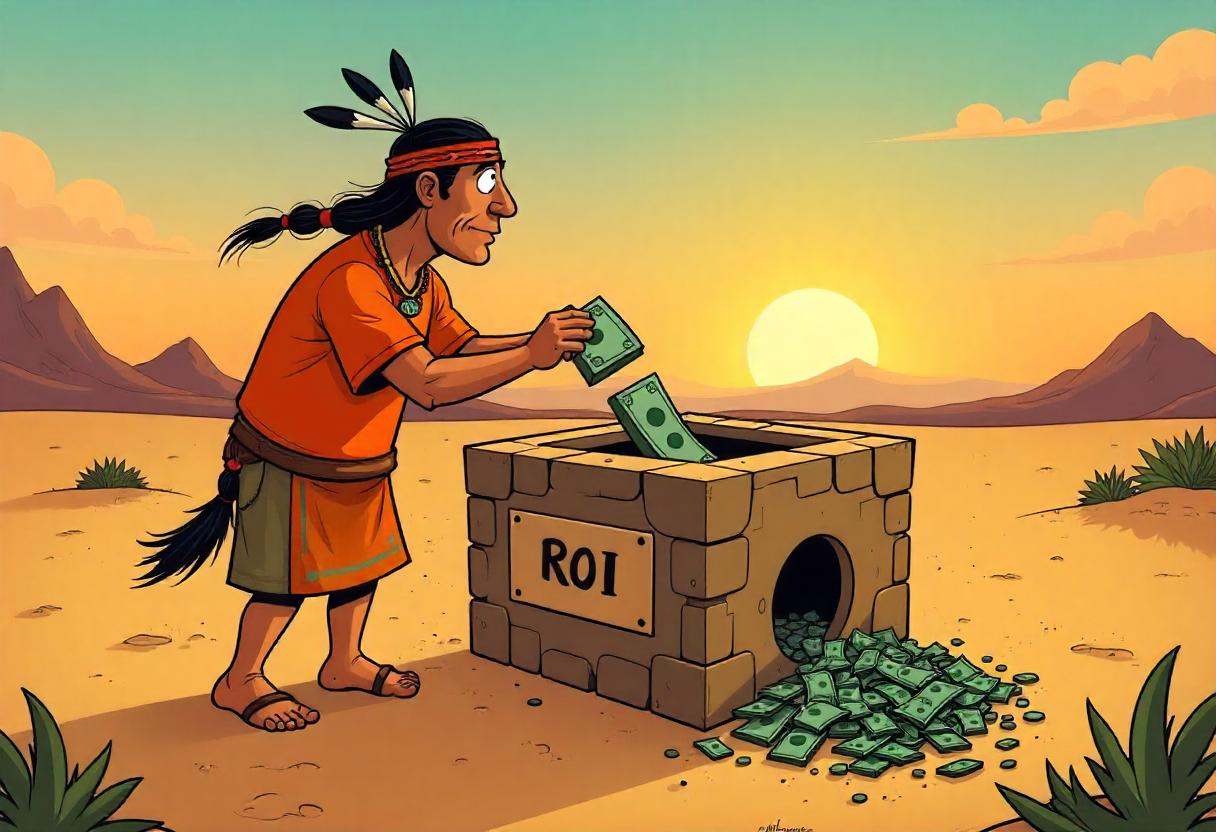“Show me the money!”
A quote that both Jerry Maguire and Video Marketers use the most!
You’re putting time, effort, budget, and Hollywood-level impression into one video marketing. Is it paying off or just cutting your profits like bad edits?
If it’s the last one, let’s meet ROI.
Like a big sibling, it tells you if your video is making money or just eating it. The metric also lets you identify the areas that need fixes and improvements in the video.
Result: Positive returns.
Now, here’s a fact:
9 in 10 marketers claim video marketing has given them a good ROI. [Source: Wyzowl]
But how do you measure that? Simple.
You evaluate key metrics like views, engagement, and conversion against production cost to track and measure ROI on video marketing campaigns.
What’s the ROI in Video Marketing?
Cash earned from each move.
ROI is short for Return On Investment. It’s a key metric that assesses how much return you get from the video compared to the money spent.
Here, the return can be:
- Profits
- Leads
- Sales
- Engagement
- Revenues
- Or Any Benefits!
ROI works slightly differently in video marketing than in other commercials.
Like
| A Normal Ad | You Click > You Buy > Easy to Measure |
| A Video Ad | You Watch > Maybe Remember The Brand > Buy The Product Later |
Example
You spend $100 on a video advertisement. It gets 1,000 views. But only 5 people buy.
Your immediate Return seems low.
But if those 1,000 viewers recall your brand. Among them, 100 buy the product later.
Your real Return is quite high.
So, it’s more than just quick sales. That’s the ROI meaning.
Comparison Table Between ROI In Video Marketing And Other Forms
| Aspect | Video Marketing | Other Marketing Forms |
| Engagement | Views, likes, shares, watch time | Click-through rates, impressions |
| Cost of production | Filming, editing, equipment, and talent cost | Advertising spend, design cost |
| Content longevity | Remain relevant for a long time if optimized | Short shelf life |
| Audience reach | Viral spread on social media | Depends on targeted ad placements |
| Conversion tracking | Complex due to various metrics | Straightforward |
ROI In Video Marketing Vs. Social Media and Email Marketing
| Form | ROI Metrics | Key Stats | Measurement Focus | Trends |
| Video | 400% ROI example from a $5000 spend | 93% of marketers see good ROI | Brand awareness, sales, views, recall, leads | Short-form videos, AI in content |
| Social Media | Varies by platform. Social commerce sales are projected at $2.9 trillion | 96% agree on positive ROI | Engagement rates, customer satisfaction | AI content, social commerce |
| 36 to 40 for every $1 spent. Up to 4400% | 64% of small businesses use email | Sales tracking, lead generation, website traffic | Personalization |
How To Set Clear Objectives for Your Video Marketing Campaign?
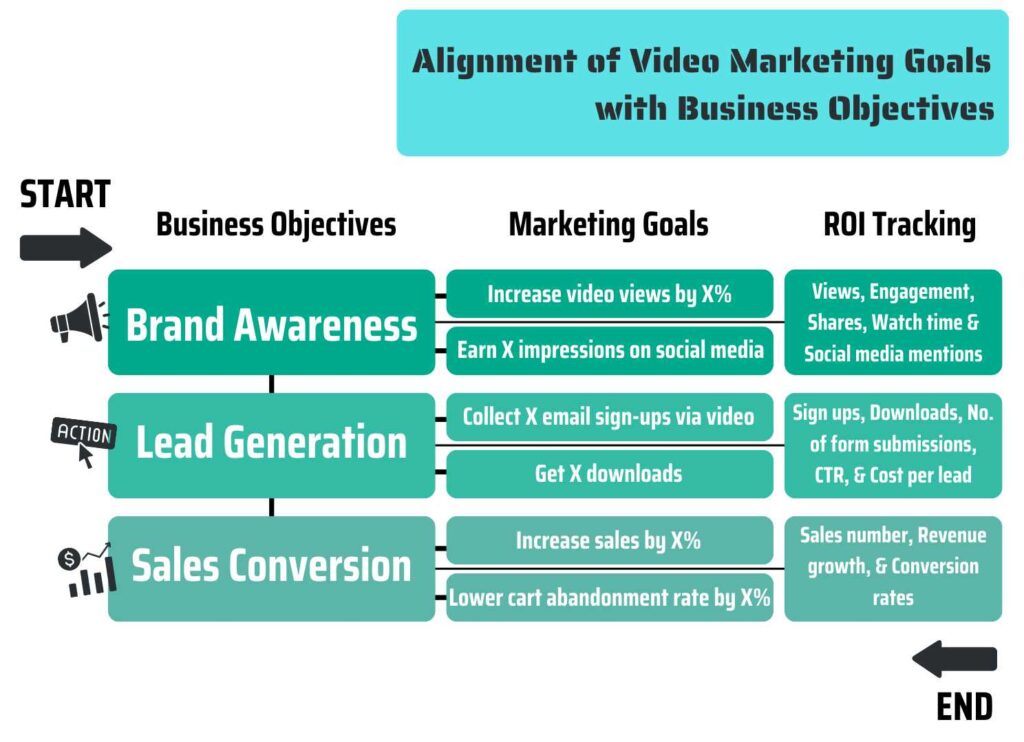
This is like an itinerary for your video marketing trip.
Without any goal, you’ll never know if your content worked. You can use the SMART formula for your objectives.
It helps you assess easily whether your marketing efforts are worth it.
Brian Tracy, a motivational speaker, says-
“Only 3% of adults set SMART goals. And they end up achieving 10x more than those who don’t.”
SMART Objectives For Video Marketing
Here, the SMART goal is-
- Specific: Clearly define what you want (like getting more leads).
- Measurable: Use numbers (like increasing website visits by 20%).
- Achievable: Set realistic targets based on your budget (like getting 500 leads from a $500 investment)
- Relevant: Align goals with business needs (like sales, brand growth).
- Time-bound: Set a deadline (like within a year or half a year)
Common Video Marketing Objectives
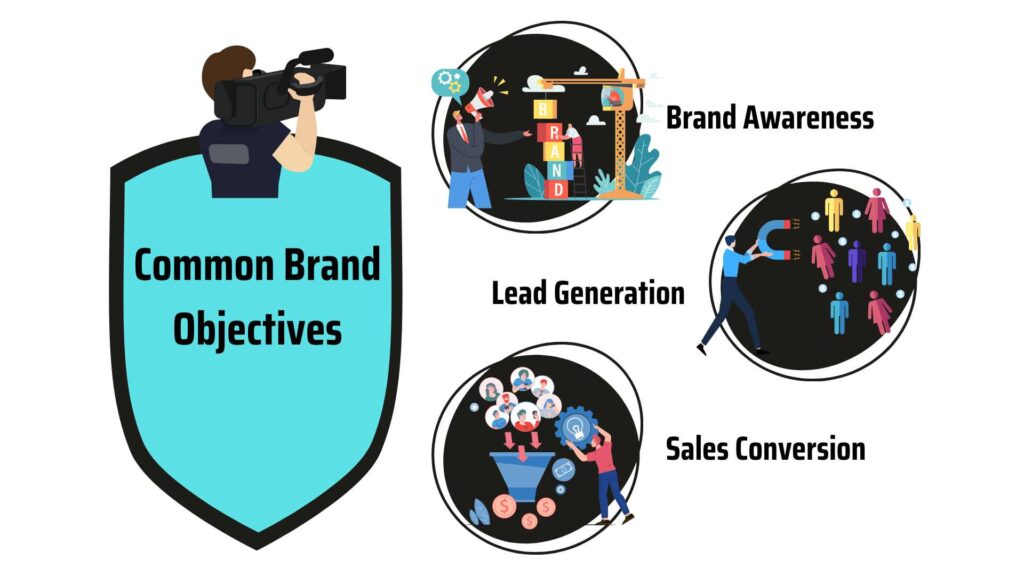
Brand Awareness
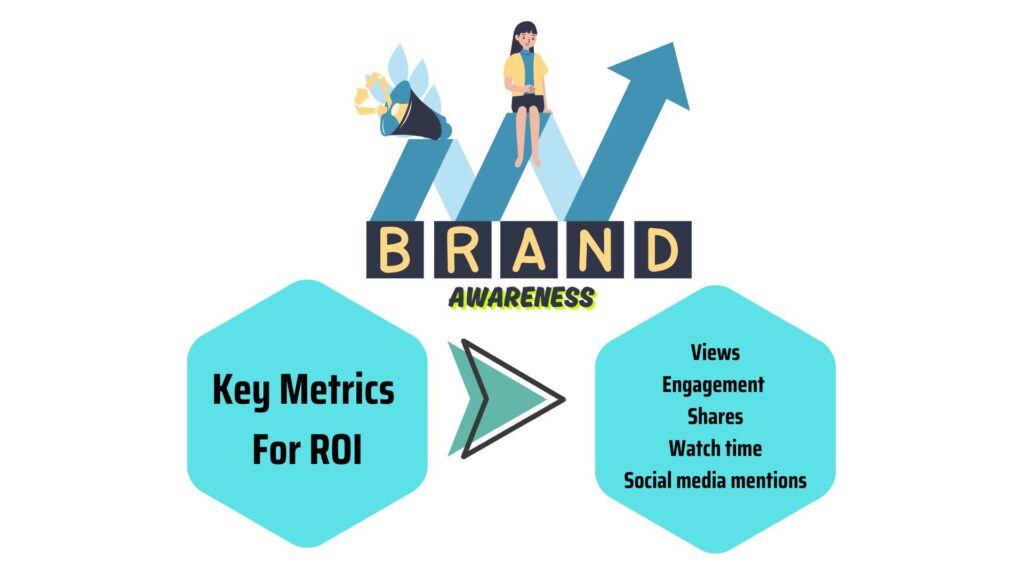
The goal focuses on getting more humans to know about your brand. But instead of saying more, it should be specific. Like-
- Achieving 1,000 views on your product video or
- Increasing video views by 40%
Viewers must recognize your brand and what it stands for as they watch the video.
When setting this goal, the ROI tracking would be:
- Views
- Engagement
- Shares
- Watch time
- Social media mentions
Let’s say-
You’ve created a fun video that highlights your product. It goes viral. That’s a huge win for brand awareness. A successful campaign can witness thousands to millions of shares and likes.
96% of video marketers say video has helped them increase brand awareness. [Wyzowl, 2025]
Lead Generation

It’s about how you can attract potential buyers and get new customers. This is the objective.
You want people to show interest in your products or services. A strong video can encourage viewers to take action.
In this case, the ROI tracking is:
- Sign up for newsletters or
- Download guides
- Number of form submissions.
- Click-through rates (CTR) from video ads.
- Cost per lead
- Conversion rate
A specific example is-
- Earning 200 email sign-ups through a video campaign within 2 months.
You can use call-to-action buttons in your videos. This guides viewers to take the next step.
Many marketers are already relishing the benefits of visual content. A stat by WiserNotify highlights that-
Video marketing helps businesses get more leads.
- Marketers get 66% more high-quality leads each year using videos.
- 87% say videos bring them more customers.
Sales Conversion
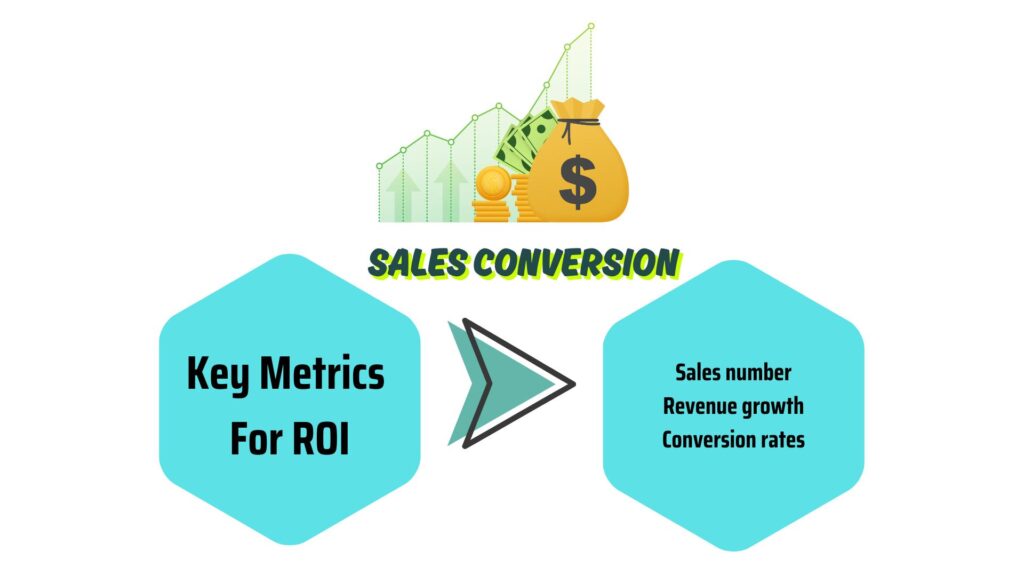
To turn viewers into buyers- that’s the goal.
No matter what, all businesses have one specific goal- to drive sales through videos.
However, if your goal is just that, assess the number of purchases made after watching the video.
It may not be immediate. However, you can set a timeline and check accordingly.
Let’s say,
The aim is to increase sales for your software. Aim for a 15% sales increase from users who watch your demo video. Convert within 30 days. Track it quarterly to measure the real impact.
So, in case you want to boost your conversion rates-
- Create product demos or testimonials from satisfied customers.
Such videos help build trust and show potential customers the value of your offerings.
The ROI tracking for such goals would be:
- Sales number
- Revenue growth
- Conversion rates from video ads
As per a study by Vidyard,
71% of marketers say video content converts better than other content types.
How To Identify Key Performance Indicators (KPIs)?

KPIs = Key Performance Indicators
They are measurable values that demonstrate how efficiently you pull off your milestones.
Essential Video Marketing KPIs
| KPI | What it measures | Why it matters |
| View count | How many watched? | Basic popularity |
| Engagement Rate | Likes, shares, comments | Shows interests |
| Click-Through Rate (CTR) | % who clicked a link after watching videos | Measure interest in your offer |
| Conversion Rate | % who took action (bought, signed up) | Direct impact on sales |
| Average View Duration | How long do people watch before dropping off | Assess whether they paid attention |
Tools and Techniques for Tracking Video Marketing ROI
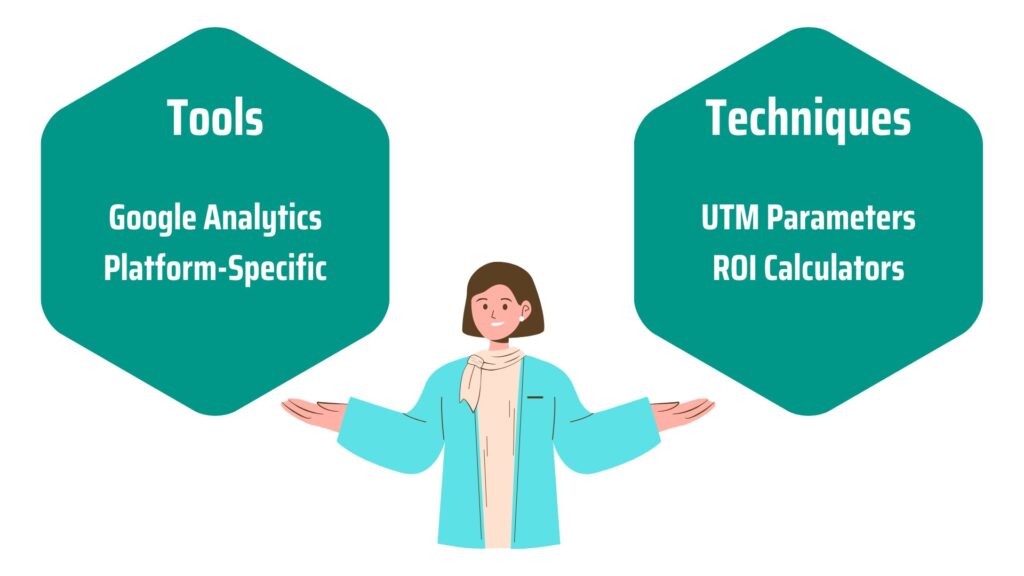
Analytics tools
Google Analytics
A powerful tool.
You can see how visitors interact with your content and site after watching.
It tracks website traffic and conversions from the content. Plus, it shows if viewers visited your site or made a purchase.
Platform Specific Insights
Different platforms have built-in analytics. They show how your videos perform.
For example-
- YouTube provides detailed insights. These are watch time, unique viewers, and audience demographics.
- Facebook and Instagram offer analytics on specific metrics. These include engagement, shares, and clicks.
Such insights present valuable information to improve your video marketing strategy.
Techniques
UTM Parameters
Short for Urchin Tracking Module.
They are the tags you add to your video links or URLs. Such tags help track where your website traffic is coming from.
For example-
You’ve posted a video on social media with a link to your e-commerce website. Adding UTM parameters will show how many viewers convert into leads or sales.
It lets you see which videos are driving traffic.
Marketing ROI Calculators
You’ll get multiple online calculators that help you compute your marketing ROI.
It’s simple. Enter your data, and they do the math for you.
One popular tool is HubSpot’s ROI Calculator. It helps estimate returns.
Marketing ROI Calculation | Step-by-Step Guide
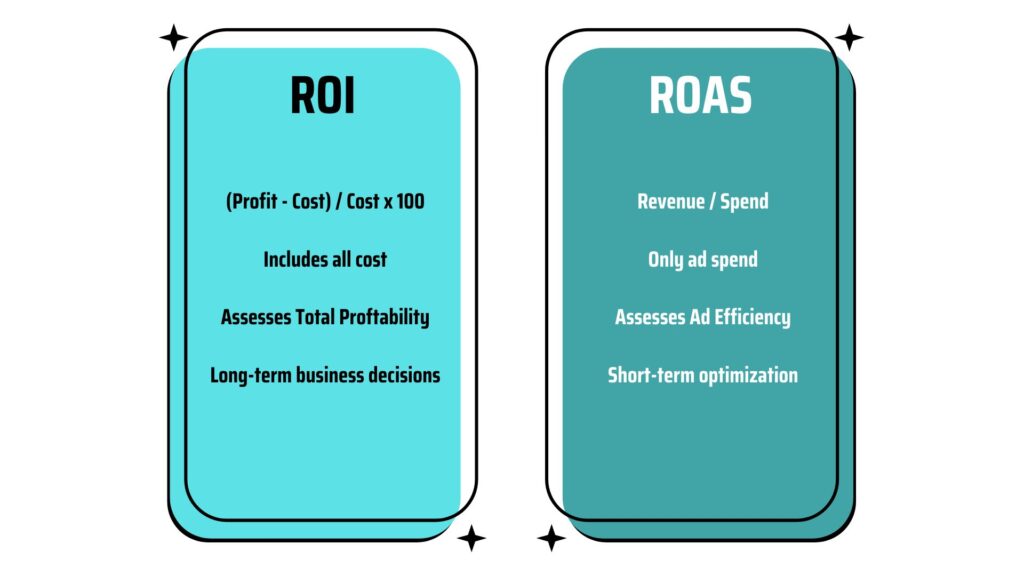
Want to count up ROI? It’s straightforward once you have all the data.
Step 1: Gather your data
Collect information like-
Gain from investment: The profit made from your video marketing campaign. Calculate this from sales, new leads, or other monetary value linked to the video.
Cost of investment: The expenses and budget you spent to create and promote the video. This includes video production costs, advertising costs, team hiring, and tool purchases.
Step 2: Plug Into the Formula
Now, stick this Marketing ROI Formula to your brain. It’s-
ROI= {(Gain – Cost of Investment) / Cost of Investment}* 100
Step 3: Interpret the Results
Calculate your ROI score. If it’s positive, congrats! You’ve made a profit.
If it’s negative, it’s a loss. You need to check where the video needs some fixes.
Example:
- Video Cost: $2,000 (filming, editing, and ads)
- Revenue Generated: $6,000
- ROI = (6,000−2,000) / $2,000 × 100 = 200%
It’s a good ROI.
ROAS (Return on Ad Spend)
Another useful metric.
ROAS has only one focus-
Revenues generated from your paid advertising. You can use the ROAS formula in digital marketing, i.e.
ROAS = Revenue from Ads / Cost of Ads
Example
- Ad Spend: $500
- Revenue: $2,500
- ROAS: 2500 / 500 = 5
This means for every dollar spent on ads, you made $5 as ROI
Attribution Models in Video Marketing
Not all sales happen right after watching a video. For video marketing, the results appear more slowly.
Someone can interact with several touchpoints before buying something. They may-
- Watch your YouTube ad > Ignore it.
- See your Instagram story > Click your profile.
- Get a retargeting ad > Finally buy
Which touchpoint gets the actual credit? That’s where attribution models come in.
First Touch Attribution
Here, the first point of contact with your brand gets all the credit.
Let’s say-
Someone sees your video ad first and later buys your product. The video receives all the credit for the RETURNS earned.
However, if the person ignores it, this isn’t the real deal.
Last Touch Attribution
It gives credit to the last interaction before a sale.
For example-
A viewer watches multiple videos related to similar products. However, they buy after seeing the last one.’That video gets full credit.
Multi-Touch Attribution
This model takes the credit when all the touchpoints work to influence the customer to buy something.
For example-
A viewer interacts with multiple touchpoints and finally makes a purchase. Here, the credit spreads across all those interactions.
Case Studies: Successful Measurement of Video Marketing ROI
Case Study 1 | Blendtec’s Will It Blend?
Will It Blend is a clever ad. In the video, a man blends iPods, iPads, 2 x 4s, or golf balls. It’s to show how powerful the blender is.
Goal
Brand Awareness
Result
- A 700% increase in sales in 5 years
- Most ads have 10+ million views on YouTube
What Worked
Shock value and humor
Case Study 2 | Dollar Shave Club
Dollar Shave Club is another hilarious video featuring Dubin. He comically explains the brand’s value in a single-shot warehouse.
Goal
Brand Awareness and Sales Conversion
Result
- 12,000 new customers in 48 hours
- Sold out 250,000 razors in 72 hours
What Worked
Humor, convenience, and budget-friendly
Common Challenges and How To Overcome Them
Here’s how to track and measure roi on video marketing campaigns online!
Challenge 1 | Tracking Across Multiple Platforms
Views on YouTube, shares on Facebook, clicks on Instagram- how to combine data?
Solution
Use UTM links and Google Analytics to track all sources.
Challenge 2 | Measuring Brand Awareness
How do you put a dollar value on “people knowing your brand”
Solution
Track social growth, surveys, and branded search traffic.
Challenge 3 | Long Sales Cycles
Someone watches a video but buys 3 months later. How to quicken the action?
Solution
Use email retargeting, multi-touch attribution model, and CRM tracking to accelerate delayed sales.
FAQs on Tracking and Measuring Video Marketing ROI
How do you track ROI for marketing campaigns?
There’s a simple strategy for tracking ROI in video marketing. Set Goals > Track KPIs > Use Analytic Tools and Calculate ROIs.
What is the ROI of a video?
ROI measures the returns you get from your video content compared to the money spent on its production and marketing.
How do you measure success in video marketing?
3 key metrics help you measure video marketing success.
• Views = Awareness
• Engagement = Interest
• CTR & Conversions = Sales impact
How do you measure ROI on marketing events?
Track event cost vs. leads/sales generated. Use the ROI formula just.

